Woven labels are a small but impactful detail that speaks volumes about a brand’s quality, identity, and professionalism. In the world of apparel and textiles, woven labels aren’t just about aesthetics; they serve as a crucial branding tool and provide important product information. Whether you’re in the fashion business, launching a new clothing line, or simply interested in the nitty-gritty of garment accessories, understanding the ins and outs of woven labels is essential. This comprehensive guide will cover every aspect of woven labels, from their benefits and types to the manufacturing process and how to choose the right one for your needs.
1. Woven Labels: A Comprehensive Overview
Woven labels are textile tags meticulously crafted by weaving threads together to form intricate designs and text directly into the fabric. This process results in durable, vibrant, and professionally-finished labels that are widely used in the apparel, accessories, and textile industries.
1.1 Definition and Purpose
A woven label is a small piece of fabric that carries vital information about a product, such as the brand logo, size, care instructions, and other relevant details. Unlike printed labels, which rely on ink and may fade over time, woven labels integrate the design into the fabric itself, ensuring longevity and a premium aesthetic.
1.2 Materials and Their Significance
The choice of material for a woven label significantly impacts its appearance, feel, and durability. Common materials include:
- Polyester: Renowned for its exceptional durability and resistance to fading, polyester is a popular choice for woven labels. It offers a wide range of colors and finishes, making it suitable for various branding applications.
- Cotton: A natural and eco-friendly option, cotton provides a soft and comfortable feel. It is ideal for labels that prioritize sustainability and a classic, understated look.
- Satin: Known for its luxurious sheen and smooth texture, satin elevates the perceived value of a product. It is often used for high-end apparel and accessories, adding a touch of elegance and sophistication.
1.3 The Role of Woven Labels in Branding and Marketing
Woven labels play a crucial role in brand recognition and marketing. A well-designed label can:
- Enhance Brand Identity: A consistent and visually appealing label reinforces a brand’s identity and values.
- Increase Perceived Value: High-quality woven labels signal premium quality and craftsmanship, influencing consumer perceptions.
- Improve Customer Experience: Clear and informative labels enhance the overall customer experience by providing essential product information.
- Boost Brand Loyalty: A strong brand identity, fostered by well-crafted labels, can cultivate customer loyalty and repeat business.
By understanding the definition, purpose, materials, and importance of woven labels, businesses can leverage this key accessory to elevate their branding and marketing efforts.
2. The Advantages of Woven Labels for Apparel
Woven labels offer a compelling array of benefits that make them a preferred choice for many clothing brands.
2.1 Durability and Longevity
Woven labels are renowned for their exceptional durability and longevity. They are highly resistant to wear and tear, ensuring that they maintain their pristine appearance even after multiple washes. Unlike printed labels, which can fade over time, woven labels retain their vibrancy and clarity, safeguarding the brand name and its associated prestige.
2.2 Superior Aesthetics
The intricate weaving process employed in the creation of woven labels results in a sophisticated and professional aesthetic. This makes them particularly well-suited for luxury brands that aim to convey a sense of quality and meticulous attention to detail. The refined look of woven labels elevates the overall perception of the garment, enhancing its perceived value.
2.3 Extensive Customization Options
Woven labels offer unparalleled flexibility in terms of customization. They can be tailored to match a brand’s unique aesthetic by incorporating a wide range of colors, fonts, and designs. This level of customization empowers businesses to create distinctive branding elements that set them apart from competitors. By aligning the label’s design with the brand’s overall identity, businesses can reinforce their brand recognition and leave a lasting impression on consumers.
3. Different Types of Woven Labels: A Comprehensive Overview
Woven labels are a fundamental component of apparel branding, providing durability, elegance, and product identification. Several distinct types of woven labels cater to a wide range of applications, each offering unique advantages.
3.1 Damask Woven Labels
Renowned for their exquisite texture and intricate designs, Damask woven labels are a hallmark of luxury and refinement. The fine, delicate weave and use of thinner threads result in a soft, almost velvety feel, making them ideal for high-end garments such as designer clothing, formal wear, and premium sportswear.
3.2 Satin Woven Labels
Satin woven labels exude elegance with their smooth, glossy surface and lustrous appearance. The tightly woven threads create a refined look and feel, often used to elevate the perceived value of a product. Satin labels are commonly found on formal attire, evening wear, and upscale accessories.
3.3 Taffeta Woven Labels
Taffeta woven labels offer a balance of durability and affordability, making them a popular choice for a variety of apparel items. The tightly woven, crisp fabric provides a sturdy, long-lasting label that can withstand the rigors of everyday wear. Taffeta labels are frequently used on casual wear, workwear, and outdoor apparel.
By understanding the specific characteristics and applications of these different woven label types, apparel brands can select the optimal option to enhance their product identity and elevate their brand image.
4. The Intricate Process of Woven Label Manufacturing: From Concept to Completion
A deep understanding of the manufacturing process behind woven labels is essential for brands seeking to elevate their product identity. By delving into the intricacies of design, weaving techniques, and finishing processes, we can appreciate the craftsmanship and technical expertise that goes into creating these enduring brand ambassadors.
4.1 Conceptualization and Design
- Brand Identity Integration: The design process begins by aligning the label’s aesthetic with the brand’s overall visual identity. This involves selecting a harmonious color palette, choosing legible and impactful fonts, and strategically placing the brand logo or other relevant messaging.
- Digital Mock-up Precision: High-resolution digital mock-ups are meticulously crafted to visualize the label’s appearance, ensuring accurate color representation, font clarity, and overall design fidelity.
4.2 Weaving Techniques: A Tapestry of Possibilities
- Damask and Satin: The Epitome of Elegance: These techniques utilize fine threads to create intricate patterns and detailed text, resulting in luxurious and sophisticated labels.
- Taffeta: A Durable and Versatile Choice: This technique employs thicker threads to produce sturdy labels with a distinctive texture and a wide range of color options.
- Weaving Density and Thread Count: The density of the weave and the thread count significantly impact the label’s durability, drape, and overall appearance.
4.3 Precision Cutting and Finishing
- Ultrasonic and Laser Cutting: Advanced cutting techniques, such as ultrasonic and laser cutting, are employed to achieve clean, precise edges and intricate shapes.
- Fold Configuration: The label’s functionality and attachment method determine the appropriate fold configuration. Common folds include:
- End Fold: A simple and versatile fold suitable for various attachment methods.
- Loop Fold: Ideal for attaching labels to garments with a hook-and-loop closure or other fastening systems.
- Center Fold: Commonly used for labels that need to be sewn onto garments.
By mastering these fundamental stages of woven label production, brands can create high-quality labels that enhance their product’s perceived value and leave a lasting impression on consumers.
5. Customizing Your Woven Labels: Key Considerations for Brands
Customization is a pivotal factor in crafting woven labels that resonate with your brand’s identity. By meticulously selecting colors, fonts, and additional details, you can elevate your brand’s image and enhance the overall customer experience.
5.1 Harmonizing Colors with Brand Identity
The judicious selection of colors is crucial in aligning woven labels with your brand’s aesthetic and values. Consider the psychological impact of colors on consumer perception. For instance, blue often evokes feelings of trust and reliability, while red can symbolize energy and passion. By harmonizing color choices with your brand’s personality, you can create a cohesive and memorable brand identity.
5.2 Selecting Readable and Brand-Aligned Fonts
The choice of fonts significantly impacts the readability and overall appeal of woven labels. Opt for clear, easy-to-read fonts that complement your brand’s aesthetic. Avoid overly intricate or decorative fonts that may not weave well or appear cluttered. By selecting fonts that are both visually pleasing and functional, you can ensure that your brand’s message is effectively communicated.
5.3 Incorporating Essential Information and Innovative Features
Woven labels can serve as valuable information carriers, providing essential details such as size, care instructions, and fabric content. Additionally, the integration of QR codes and RFID tags offers exciting opportunities for tracking, digital marketing, and enhanced consumer engagement. By strategically incorporating these elements, you can elevate your brand’s value proposition and provide a seamless customer experience.
6. How to Attach Woven Labels to Garments: Techniques and Tips
The successful integration of woven labels into a garment is a critical aspect of brand identity and product quality. The method of attachment must be carefully considered to ensure both durability and aesthetic appeal.
6.1 Sewing Methods
- Seam Sewing: This traditional method involves sewing the label directly into a garment’s seam, often the side seam or inner neck seam. It offers a secure and discreet attachment.
- Edge Stitching: The label is stitched along its edge to the garment, typically on the neckline, waistband, or cuff. This method allows for more prominent label placement.
- Double-Needle Stitching: Using a double-needle sewing machine provides a stronger and more durable attachment, especially for high-stress areas like collars and cuffs.
6.2 Heat-Seal Adhesives
Heat-seal labels are affixed using a heat press machine. This method is ideal for lightweight fabrics and delicate garments where traditional sewing might damage the fabric.
- Advantages:
- Quick and efficient application
- Minimal fabric damage
- Clean and professional finish
6.3 Tagless Options
Tagless labels are designed to be ironed directly onto the garment, eliminating the need for traditional tags. This innovative approach offers several benefits:
- Enhanced Comfort: Reduces irritation and discomfort for the wearer, particularly in sensitive areas like the neck.
- Sleek Aesthetic: Provides a seamless and modern look to the garment.
- Brand Protection: Can include security features like heat-sensitive inks or RFID tags.
Choosing the Right Method
The optimal method for attaching woven labels depends on various factors, including:
- Garment Type: The fabric weight, style, and intended use will influence the best attachment technique.
- Label Placement: The desired location of the label will determine the most suitable method.
- Brand Identity: The overall brand aesthetic should be considered when selecting the attachment method.
- Durability Requirements: For high-performance garments, a more robust attachment method may be necessary.
By carefully considering these factors, manufacturers can ensure that their woven labels are securely attached and enhance the overall quality and presentation of their products.
7. Selecting the Ideal Woven Label Supplier: A Comprehensive Guide
The caliber of your woven labels is inextricably linked to the supplier you entrust with their production. When selecting a woven label manufacturer, consider the following critical factors:
7.1 Experience and Expertise
Opt for suppliers with a proven history of delivering exceptional quality woven labels. Seasoned manufacturers possess the requisite knowledge and skills to navigate you through the intricate design and production phases, ensuring optimal results.
7.2 Customization Capabilities
Seek suppliers that offer a diverse array of customization possibilities, encompassing color palettes, font selections, dimensions, and finishing techniques. A reputable supplier should be adept at tailoring labels to meet your specific branding objectives.
7.3 Cost-Effectiveness and Production Efficiency
Conduct a comparative analysis of costs and lead times among different suppliers to identify the most advantageous balance between quality and budgetary constraints. It is imperative to prioritize quality over price, as subpar labels can adversely impact your brand’s perception.
8. Woven Labels and Sustainability: Eco-Conscious Choices for Modern Brands
Sustainability is a paramount concern in today’s fashion industry. Beyond the garments themselves, even the smallest details, like woven labels, can contribute to a brand’s eco-friendly ethos.
8.1 Embracing Organic and Recycled Materials
- Organic Cotton: By opting for organic cotton labels, brands can minimize the use of harmful pesticides and fertilizers, safeguarding both the environment and the health of workers.
- Recycled Polyester: Utilizing recycled polyester labels offers a sustainable solution by repurposing plastic waste into a durable and stylish product.
These eco-friendly materials resonate with environmentally conscious consumers and align with the growing demand for sustainable fashion.
8.2 Biodegradable and Compostable Innovations
Some forward-thinking suppliers offer biodegradable woven labels that decompose naturally over time, reducing waste and minimizing the label’s environmental footprint. This innovative approach is particularly appealing to brands striving for zero-waste practices.
8.3 Low-Impact Dyes and Inks
- Eco-Friendly Dyes: By selecting labels that employ eco-friendly dyes, brands can avoid harsh chemicals that pollute water bodies and harm ecosystems.
- Water-Based Inks: Water-based inks provide a sustainable alternative for vibrant and safe label designs, reducing the reliance on solvent-based inks that can release volatile organic compounds (VOCs).
By prioritizing these low-impact materials and processes, brands can create woven labels that not only enhance their products but also reflect their commitment to environmental sustainability.
9. Woven Labels vs. Printed Labels: A Comparative Analysis
The selection of labels for garments or products is a critical decision that significantly impacts overall brand perception and product durability. Two primary options, woven and printed labels, each possess distinct advantages and disadvantages.
9.1 Durability
- Woven Labels: Renowned for their exceptional durability, woven labels are highly resistant to fading, fraying, and general wear and tear. This makes them an ideal choice for long-lasting garments and products that may endure frequent washing or harsh conditions.
- Printed Labels: While more affordable, printed labels are susceptible to fading, cracking, and peeling over time, particularly when exposed to friction or moisture. Consequently, they are better suited for short-term or seasonal collections where longevity is less of a concern.
9.2 Aesthetic Appeal and Quality Perception
- Woven Labels: Woven labels offer a premium, tactile experience, characterized by a textured, three-dimensional appearance. This elevated aesthetic can significantly enhance the perceived quality and value of a product, particularly in high-end or luxury markets.
- Printed Labels: Printed labels, while versatile and customizable, often present a flatter, less refined appearance. While they can still be visually appealing, they may not convey the same level of sophistication and craftsmanship as woven labels.
9.3 Customization and Cost
- Printed Labels: Printed labels offer greater flexibility in terms of design complexity, color palette, and intricate details. This makes them a cost-effective option for brands with frequent design changes or seasonal collections.
- Woven Labels: While more expensive to produce, woven labels provide a timeless and elegant branding solution. Their durability and premium aesthetic make them a worthwhile investment for brands seeking to establish a strong, enduring brand identity.
By carefully considering these factors, businesses can make informed decisions about the most suitable labeling solution for their specific needs, ensuring that their products are presented with the utmost care and attention to detail.
10. Trends in Woven Labels: A Comprehensive Overview
Woven labels, a cornerstone of brand identity, continue to evolve with the times. By staying abreast of the latest trends, businesses can elevate their product presentation and strengthen their brand image.
10.1 Minimalism: A Timeless Appeal
In an era of information overload, minimalist design offers a refreshing simplicity. Woven labels that embrace this trend prioritize clarity and brand recognition. Key characteristics of minimalist labels include:
- Clean Lines and Basic Fonts: A focus on simplicity and readability.
- Neutral Color Palette: Subtle hues that complement the product’s aesthetic.
- Prominent Branding: A clear and concise display of the brand name or logo.
10.2 Vintage Revival: Nostalgia, Reimagined
Nostalgia-driven design has made a significant resurgence, with woven labels capitalizing on this trend. Vintage-inspired labels evoke a sense of heritage and tradition. Key elements of this trend include:
- Earthy Color Palettes: Warm, natural tones that evoke a sense of timelessness.
- Traditional Fonts: Classic typefaces that add a touch of authenticity.
- Distressed Effects: Techniques like fading and fraying to create a vintage look.
10.3 Smart Labels: The Future of Branding
The integration of technology into woven labels opens up new possibilities for brands to engage with their customers. Smart labels offer a range of functionalities, including:
- QR Codes: Enabling quick access to product information, brand stories, and online experiences.
- NFC Chips: Facilitating contactless interactions, such as product authentication and personalized offers.
- Interactive Elements: Providing dynamic experiences, such as augmented reality or virtual try-ons.
By understanding and implementing these trends, businesses can create woven labels that not only enhance their product’s appeal but also resonate with their target audience.
Conclusion: Elevating Your Brand with the Right Woven Labels
Woven labels are more than just an accessory—they are a critical aspect of your brand’s identity and can significantly impact how customers perceive your products. From their durability and aesthetics to the vast customization options available, woven labels offer a superior way to convey your brand’s message. By investing in high-quality woven labels, you are taking a step towards building a strong, professional image that resonates with your target audience.
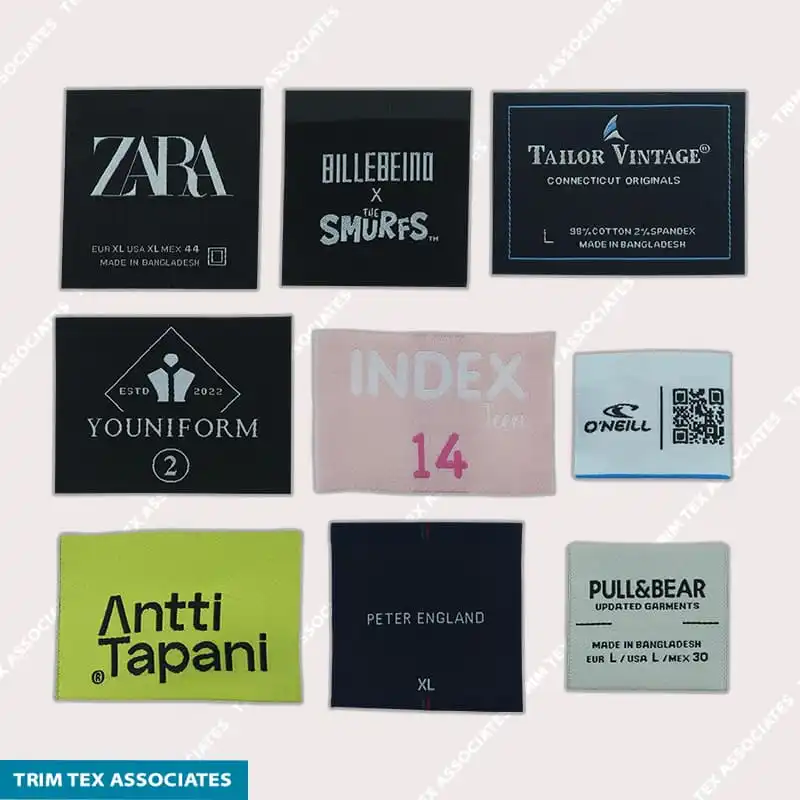
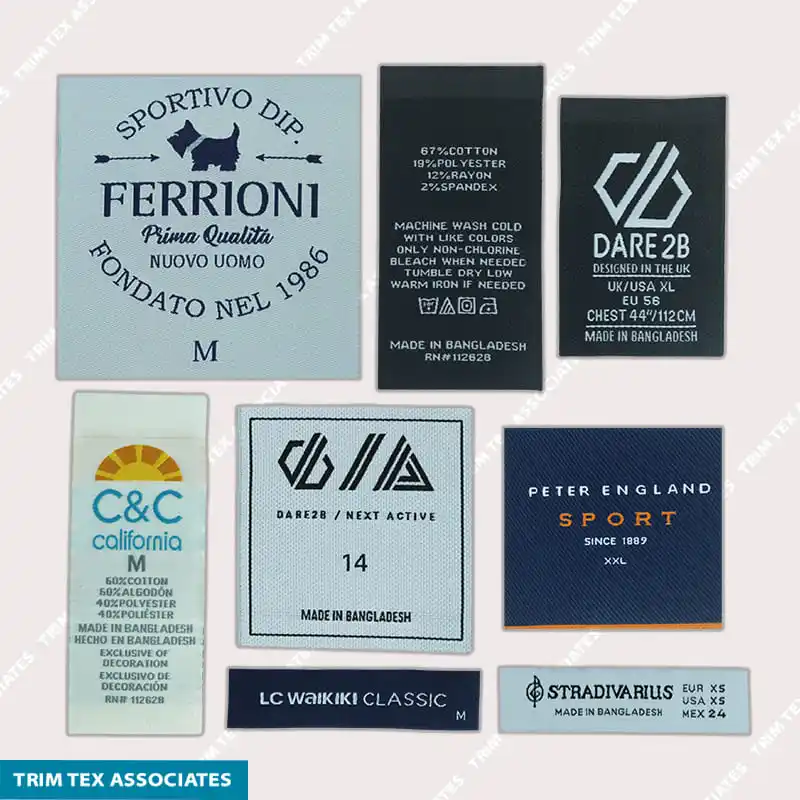
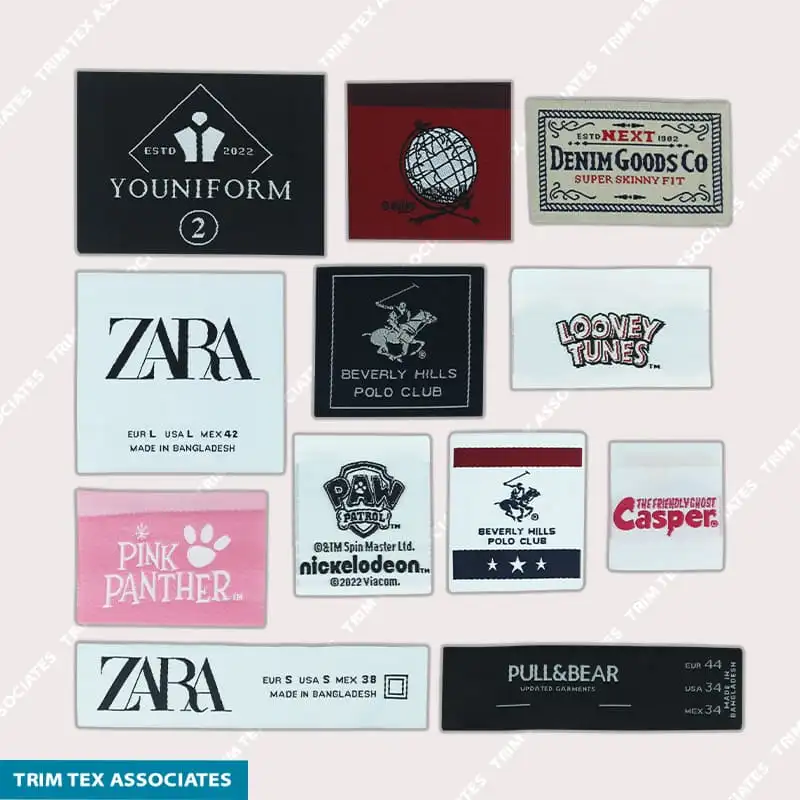


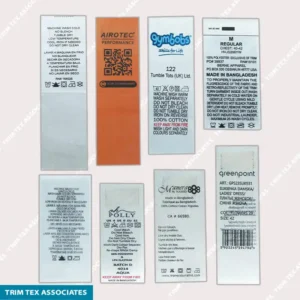
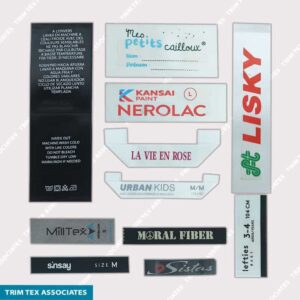
Reviews
There are no reviews yet.